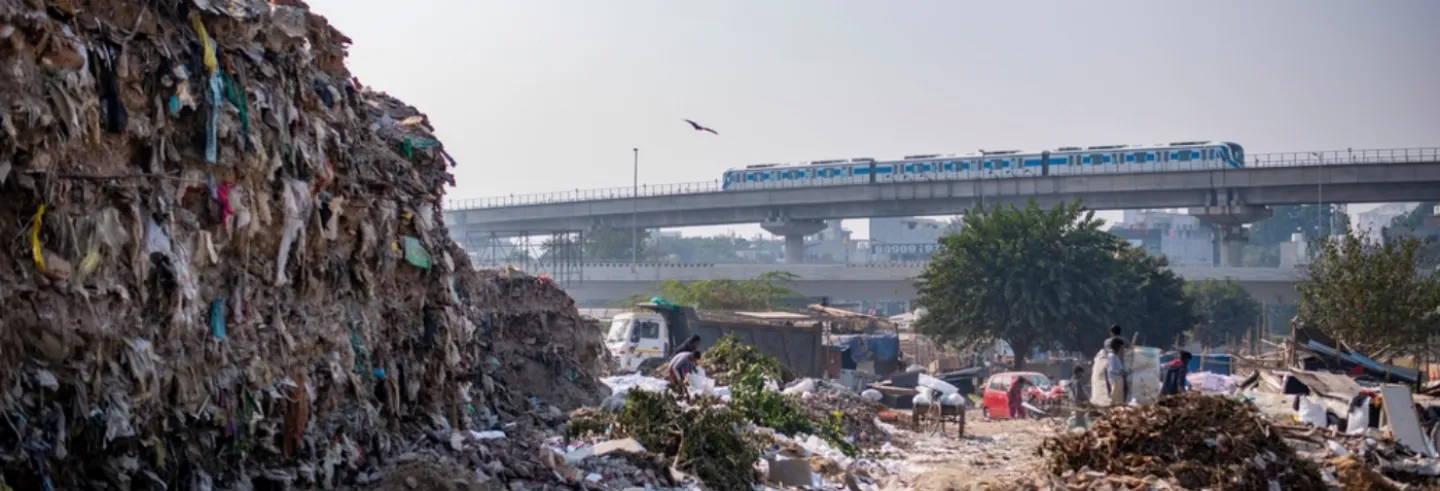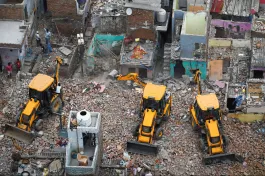Disclosures made during earning calls of a publicly listed firm are a valuable source of information to assess the broad health of the firm’s business sector, the trajectory of sector’s operational metrics, and the impact of policy and the politics of the day on the firm and on the sector. For instance, the annual filings of listed entities in the Indian information technology (IT) sector provide a reasonably accurate guide to not only the sector’s current and future discourse but also its interaction with broader economic and geo-political factors.
It is for this reason that the earning calls of firms such as Infosys, TCS, Wipro, and HCL are scrutinised. Every word uttered by their representatives, and also not uttered by them, is analysed. Their call transcripts are extrapolated to determine a point of view on everything from jobs and health of the economy to currency risks and the impact of new technologies.
India now has a handful of listed pure-play waste management companies. A prominent one amongst them is Thane-based Antony Waste Handling Cell Ltd. (AWHCL), which has a track record of 17 years. The earning calls of this company not only give valuable insights into an infant sector but also offer details about the challenges it faces because of a lack of imagination, under-capitalisation, and the Indian state’s apathy. The company’s latest quarterly earnings call for the second quarter of the ongoing financial year was one in which its senior management was asked two questions that highlight the boarder struggles of the waste and sanitation management sector in the country.
AWHCL reported that it paid a fine during the period for delays in depositing the provident fund contributions of a few of its employees. On being questioned about the reason for this, the senior management clarified that many permanent employees come from marginalised sections of society and are semi-literate. They do not possess school leaving certificates, which have to be mandatorily provided along with their provident fund accounts.
We can easily infer that many impoverished employees have not seen the inside of a classroom and that it is unrealistic to expect them to have identity documents with the correct details.
Another reason was that the provident fund accounts of employees had to be linked to their Aadhaar details. This has revealed many mismatches between the names on their documents and in their Aadhaar files, which often jumble up first names and family names and use many short forms.
When we work back from this to the employment profile in waste management in the country, we can easily infer that many impoverished employees have not seen the inside of a classroom and that it is unrealistic to expect them to have identity documents with the correct details. It is disconcerting to note that one of the largest waste management companies in India faces such a struggle to bring a few thousand marginalised people to formal employment and offer them a life of dignity. Given this, what chance do the millions engaged in the waste management sector have to escape the cycle of marginalisation and exclusion they are caught in?
The second question to the company in the same call was equally revealing. The company provides waste management services to a few municipalities in the country through multi-year contracts. The city of Mumbai is its biggest client. These contracts have escalation provisions that take care of inflation and associated costs to protect the company from operational risks.
The company’s senior management was asked why it was unable to activate the escalation clause for Mumbai. The management replied that delays in elections to the local bodies meant that the elected bodies are not in place to sign off on these escalations.
Imagine the trouble caused by this and its adverse impact on sanitation in the city. Many residents of Mumbai mentally curse the mayor and councillors, but they have not been elected as yet. Not many Mumbaikars are aware of the connection between the local government’s disempowerment and the mediocre sanitation services in their neighbourhood.
AWHCL’s quarterly call represents the perennial challenges faced by India’s waste management sector: a lack of capital, empathy, and critical thinking among those who should be change makers. For the sceptics, here are a few other examples.
The absence of a standing committee in the elected municipal corporation of Delhi is the reason for the delay in using the infrastructure to process the legacy waste at three landfill sites and commission decentralised waste processing centres in Delhi. The consequence is the unabated arrival of new waste at the three landfills and the continued leaching of the legacy waste into the environment, and the release of toxins into the atmosphere, which gets captured in the air quality index (AQI) on nearly all days in a year.
AWHCL wants to improve human capacity with the right intent but cannot do it. Gurugram has to build the human capacity to tackle the fallout in a city that harbours global aspirations but will not do it.
Gurugram and its surrounding suburbs mirror these challenges. Nearly 1,000 sanitation workers of the city went on a three-month strike over both the non-payment and underpayment of salaries in the second half of the current year. The strike coincided with the time this city, which has one of the highest per capita income clusters in the country, was on a festival-fuelled consumption binge.
Counting this strike, the city has averaged one every two years in the last decade on the same issue. What does it say about Gurugram’s approach to human capacity building in waste management? Only that it is primitive and archaic while the city’s consumption standards can be internationally measured. AWHCL wants to improve human capacity with the right intent but cannot do it. The municipality of Gurugram has to build the human capacity to tackle the fallout in a city that harbours global aspirations but will not do it.
Gurugram faces the challenge of setting up decentralised recycling centres across the city to process waste. It awarded a contract to a private enterprise to set up such centres but withdrew it after resistance by vested interests. The National Green Tribunal (NGT) has banned new garbage arrivals to the existing open landfill in the city.
With its back to the wall, the municipal body, which has no blueprint or resources, stands by while mini waste landfills of construction debris and putrefied food in crushed plastic packets mushroom all over the city, which has the most expensive real estate in the country. This culminated in the NGT issuing a summons to the municipal commissioner, asking why the city had failed to remove legacy waste from the open and toxic Bandhwari landfill, which continues to be the destination for the waste generated by the city.
Three years ago, Manesar, a bustling suburb that borders Gurugram, was upgraded to a full municipality, and earned the right to elect its councillors. But it is without any blueprint or money to manage its burgeoning problem of its waste. When it came to hiring an expert agency to undertake door-to-door collection of waste in the city, the proposal was sent to the state government for approval while the municipality made a temporary arrangement. The city still awaits the necessary approval and mini dump yards adorn its neighbourhoods.
Gurugram also dazzles for a third reason: urban planning and governance. Recently, the city revealed a plan to construct three new effluent treatment plants (ETFs). The announcement was well-intentioned but came 10 years too late for the city. The planned ETFs are not for some new yet to be habited clusters but for localities where people have been living and discharging their sewage in the open for more than a decade.
Gurugram opened the new settlements and then looked the other way when the builders dumped the sewage into the open fields nearby. It took a decade for it to wake up to the absurdity…
A modicum of sanity would have ensured that these housing settlements had sewage systems and ETFs before they are granted occupancy certificates and deemed fit for living. But urban planning in Gurugram and sanity have rarely been good friends. The city opened the new settlements and then looked the other way when the builders dumped the sewage into the open fields nearby. It took a decade for those in the corridors of power to wake up to this absurdity.
It was not long ago when the Clean India campaign began with a lot of hype and hope all around. Seven years after its launch, like the air in Delhi, which was in the clean zone for only one day in the whole of last year, Clean India has been reduced to a one-day social media buzz event on 2 October, which is called Swachata Diwas (sanitation day).
For the rest of the year, stories of India’s sanitation challenges are repeatedly seen in the media, be it in Manesar or Mumbai: broken drains, choked and overflowing sewers, deaths of sanitation workers, injuries to them, leachate and toxins from landfills that are supposed to be non-operational in the eyes of the judiciary, and cows feasting on piled up garbage. The unveiling of the 100 smart cities under the smart cities mission that was earlier scheduled for 2020 has been revised two times and is now set for June of 2024.
All attempts to announce our just-around-the-corner arrival on the world stage and stamp the greatness of our glorious culture lose steam when it comes to the issue of managing our own excreta.
The only government-backed data on sanitation that is now in the public domain is the annual Swachata Survey (cleanliness survey) that qualitatively ranks participating cities on a set of measures. Incidentally, Gurugram slipped from 19th rank it scored last year to 140th rank on this year’s survey. Having said that these measures do not track the number of sanitation workers who went on strike or whose wages were not paid on time or those who were brought into formal employment.
They do not measure pending proposals for door-to-door waste collection or the number of summons issued by the NGT in a year. They do not measure the quantum of waste that the city recycled in proportion to the waste generated in the year gone by or the capacity of recycling centres functioning in a city. They do not measure the amount of methane that the city harvested from its landfills. They do not record the number of stray cows that treat dump yards as fodder banquets, nor do they report on the number of houses connected to a closed sewer or the preventive health indicators of those involved in the delivery of sanitation services and in waste-processing sweat shops.
The relative rank of a city on this survey often belies the stench of that city’s landfills and open drains, the number of days in a year its citizens inhaled air in the green AQI zone, or the number of people who fell ill due to vector-borne diseases in a year.
All attempts to announce our just-around-the-corner arrival on the world stage and stamp the greatness of our glorious culture on it lose steam when it comes to the issue of managing our own excreta. This issue disarms all pomp, deflates claims of our self-styled greatness, and cannot be answered by artificial intelligence (AI) and machine learning (ML), the size of our gross domestic product (GDP), the Conference of the Parties (COP28) declaration, drones, corridors, expressways, or yoga.
The continued marginalisation of those employed in the waste management sector, the existence of anaemic local bodies that have the responsibility of managing waste, and the blinkered approach towards town planning and governance all come together in an unholy trinity, pointing to what is responsible for India’s sanitation challenge. Without addressing this unholy trinity, India will continue with the stillbirth of waste management in the country.
Disclosure: The author owns shares of AWHCL. The inference made about the company is based on publicly available data and information.
Ankur Bisen is with Technopak Advisors, and the author of Wasted: The Messy Story of Sanitation in India, A Manifesto for Change (Macmillan, 2019)









